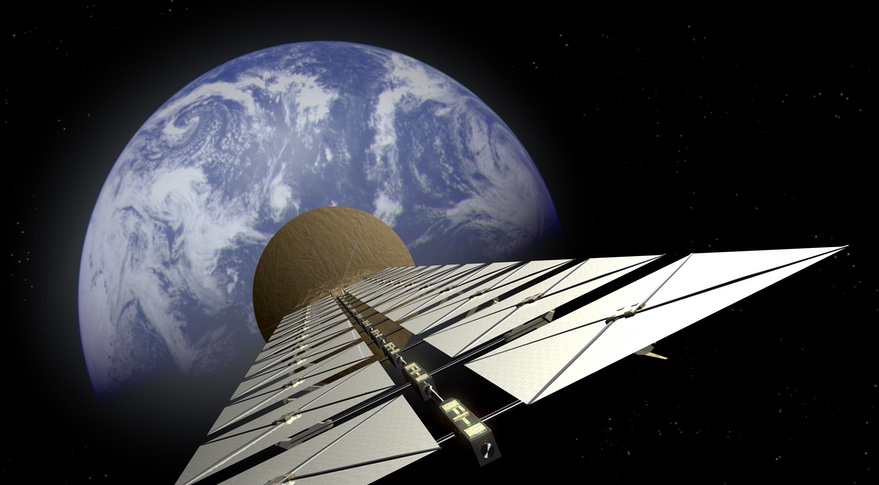WASHINGTON — NASA is starting a study to reexamine the viability of space-based solar power, a long-touted solution to providing power from space that may be getting new interest thanks to technological advances and pushes for clean energy.
In a presentation at the National Space Society’s International Space Development Conference May 27, Nikolai Joseph of NASA’s Office of Technology, Policy and Strategy said the agency was beginning a short-term study evaluating the prospects of space-based solar power, or SBSP, the first by the agency in about two decades.
“As the technology has evolved, the feasibility of the system has changed over time,” he said. “This study is going to assess the degree to which NASA should support space-based solar power.”
The study will not attempt to come up with a new architecture for SBSP, but instead reexamine past concepts for collecting solar energy in space and transmitting it to the ground for conversion to electricity. Those updated systems will be compared to terrestrial power systems and assess policy and implementation challenges they face.
It will also look at the costs of such systems, which traditionally has been a major stumbling block in previous studies dating back to the 1970s. “It’s going to be a lot of money, but money is not the only driver here,” he said. “If the number is huge and staggering, that might be OK.”
Advanced in several technical areas, Joseph said, give the agency reason to at least reexamine the feasibility of SBSP. “The elephant in the room is launch costs, and launch has become significantly more accessible. That completely changes the way we look at this,” he said. Other areas that have seen advances include thermal systems, electronics, materials and solar panels.
NASA has had discussions with the U.S. Space Force and other “technical agencies” on the study, he said. There are no plans currently to seek public input through a formal request for information or other process, but he did not rule out doing so later on. The goal is to finish the study and present it at the International Astronautical Congress in Paris in September.
There has been a revival of interest in SBSP in recent years, including a workshop last December by the European Space Agency that Joseph said NASA attended and which led the agency to consider its own study. The British government included SBSP as a technology it was exploring alongside nuclear, wind and other energy systems last year.
Much of that interest is driven by the desire for energy sources that can achieve goals of “net zero” carbon emissions to mitigate climate change. “I think it’s one of the more promising things that we can do from a space perspective to help save the planet. We’ve got to get to 2050 net-zero,” said Karen Jones of The Aerospace Corporation’s Center for Space Policy and Strategy during a later panel on SBSP at the conference.
“It just doesn’t make any sense for the United States to not be looking at this,” said Peter Garretson, a former U.S. Air Force officer who led a study on SBSP by the now-defunct National Security Space Office in 2007. He cited both climate change as well as international competition, including reported Chinese interest in SBSP.
“Even if you were to assume that space solar power would not end up being economical, the fact that we are losing the narrative by not trying for something on a global agenda just makes us look silly,” he argued.
John Mankins, a longtime advocate for SBSP who led earlier NASA studies on the topic, said “super cheap” space access promised by vehicles like SpaceX’s Starship changed the economics of such system. “Transportation is no longer part of the cost equation,” he said. “That makes space solar power potentially affordable, depending on how you do it.”
In his speech, Joseph said the study, besides looking at costs and policy issues, will also examine public perception of space-based solar power. “Public perception is something we don’t talk much about,” he said, noting that when he explains how such systems would beam power back to Earth, people ask what that would mean for birds flying through those beams. “I don’t think it’s going to be a problem, but I don’t fully know and I need to understand that.”
He said the study could provide benefits even if it concludes SBSP isn’t feasible. “It’s a wonderful strawman for understanding how we attack big problems like this,” he said. “It’s also a great way to look at how you build policy around big projects.”
“I feel there’s something of an obligation within NASA to look at this,” he added, “because it’s been around for so long and this idea hasn’t been destroyed yet. It’s persisted.”
